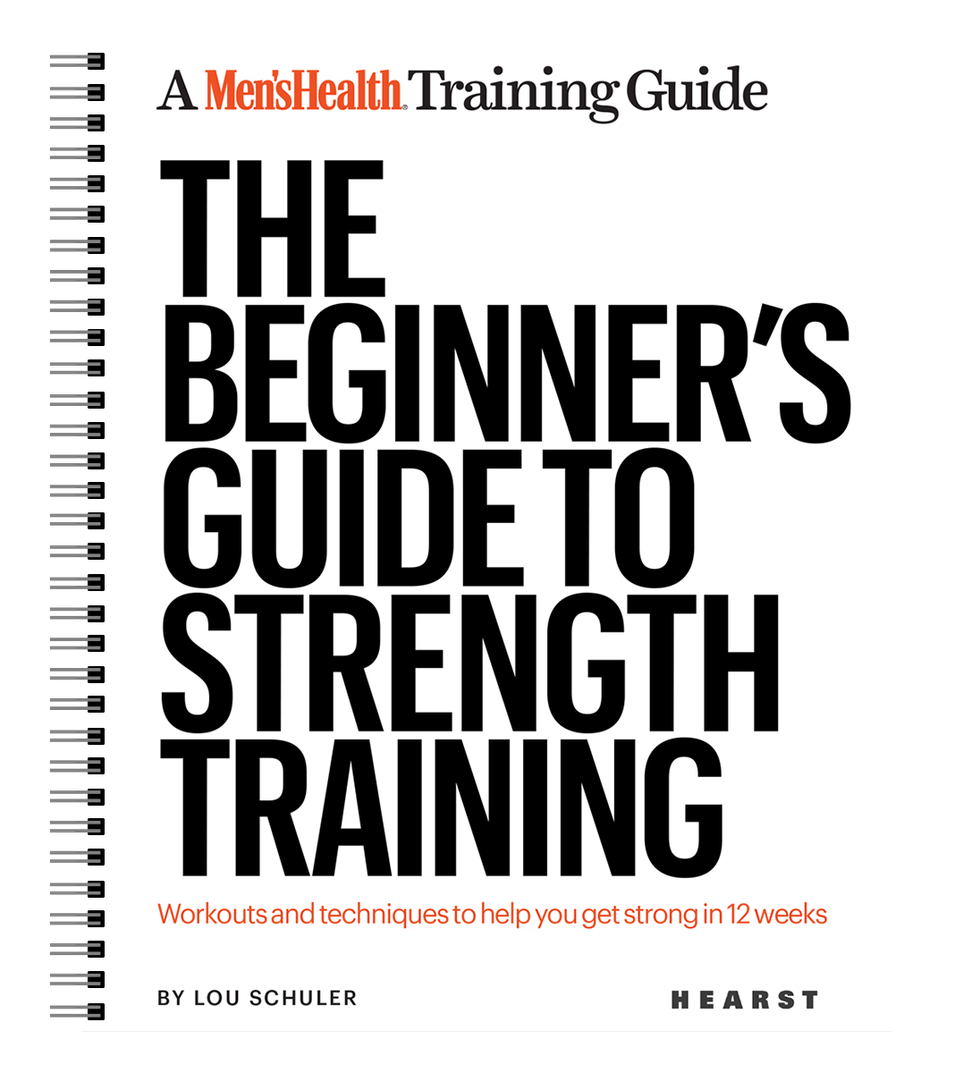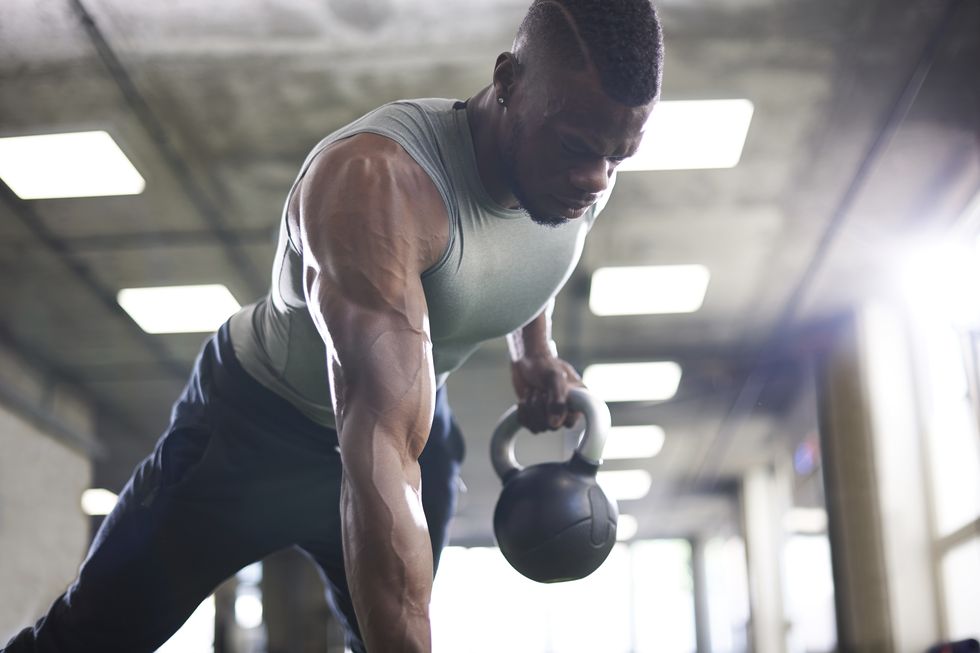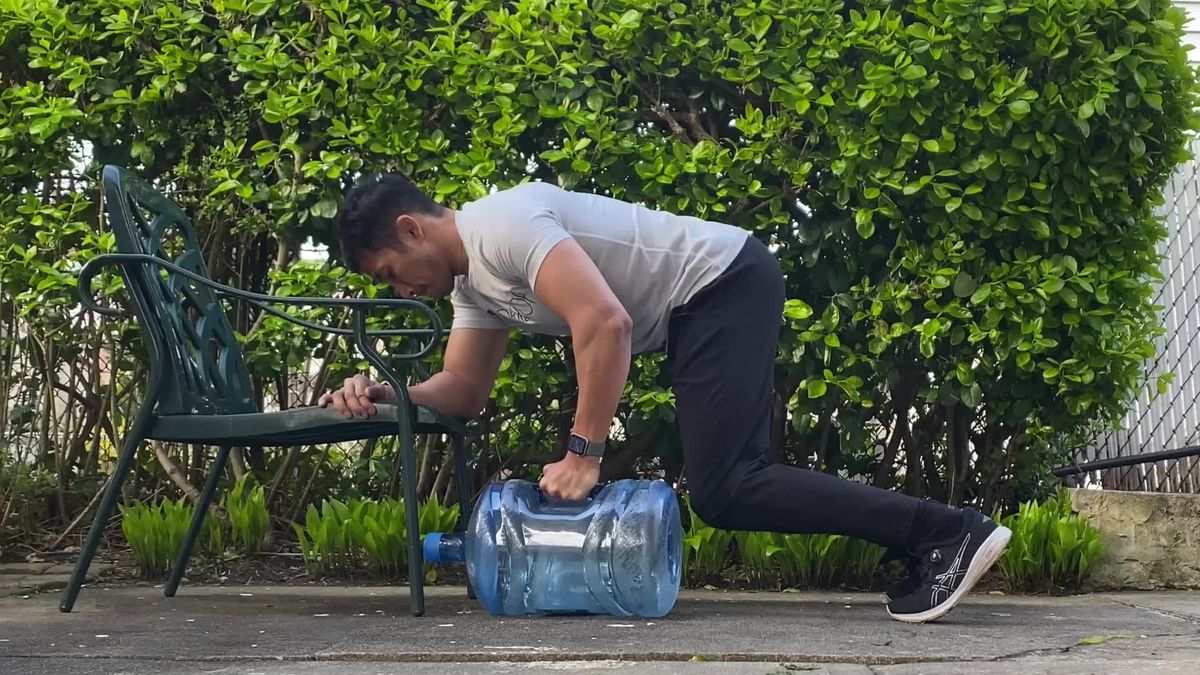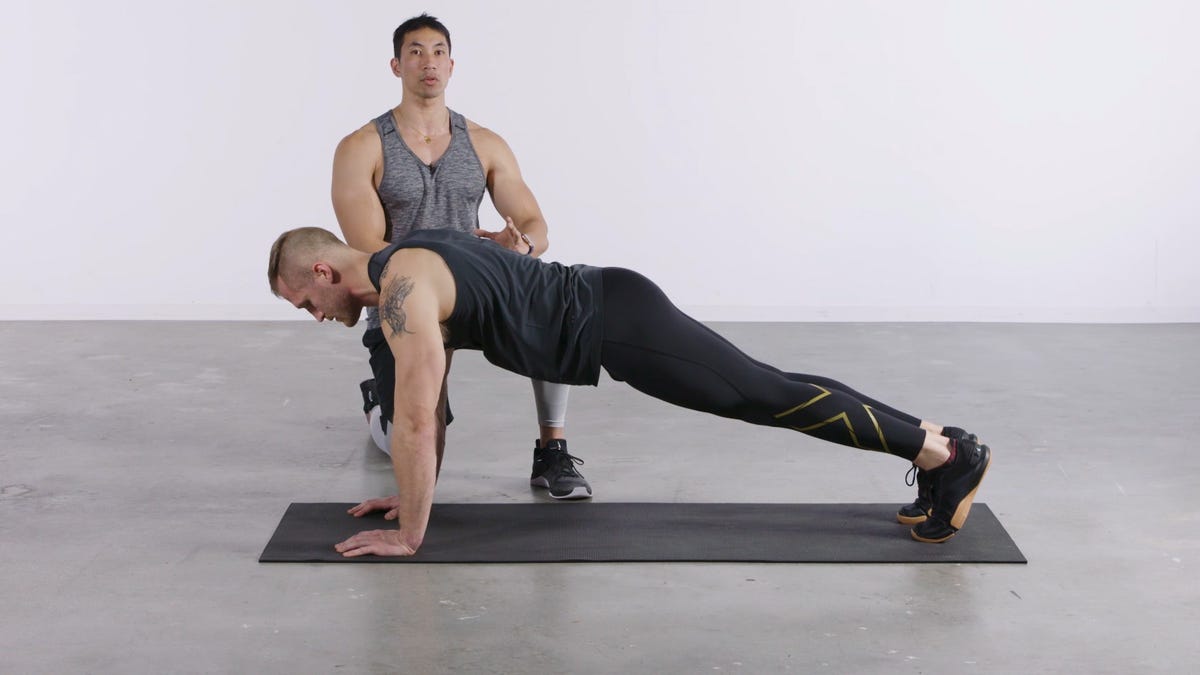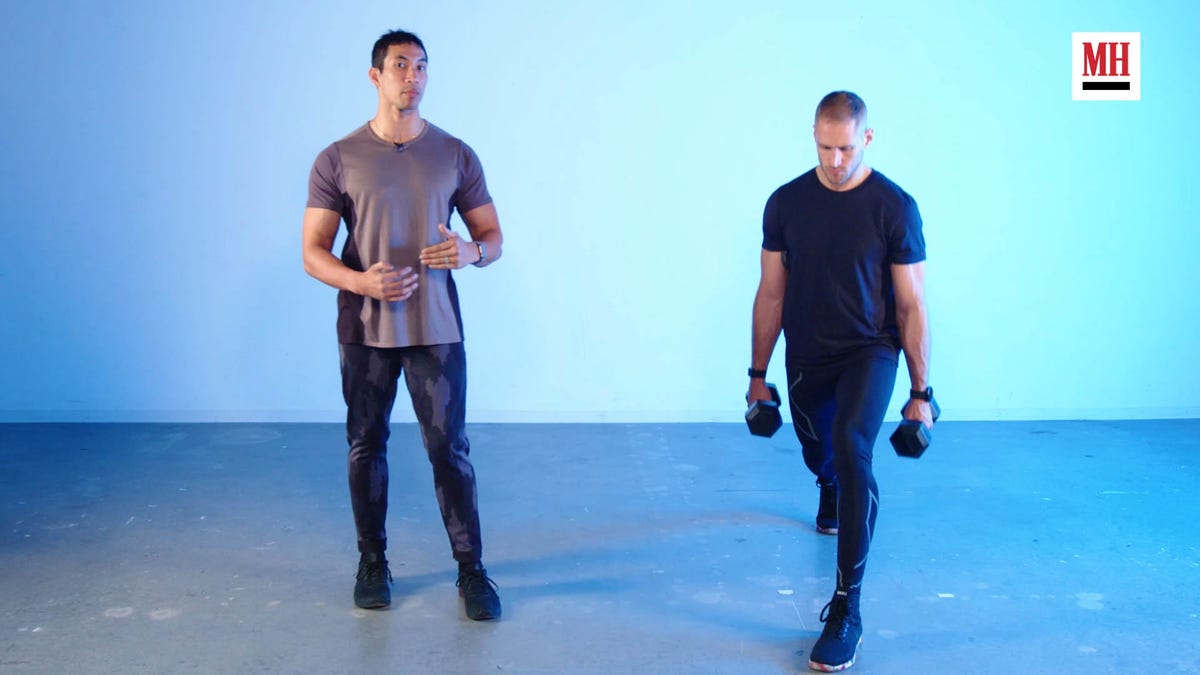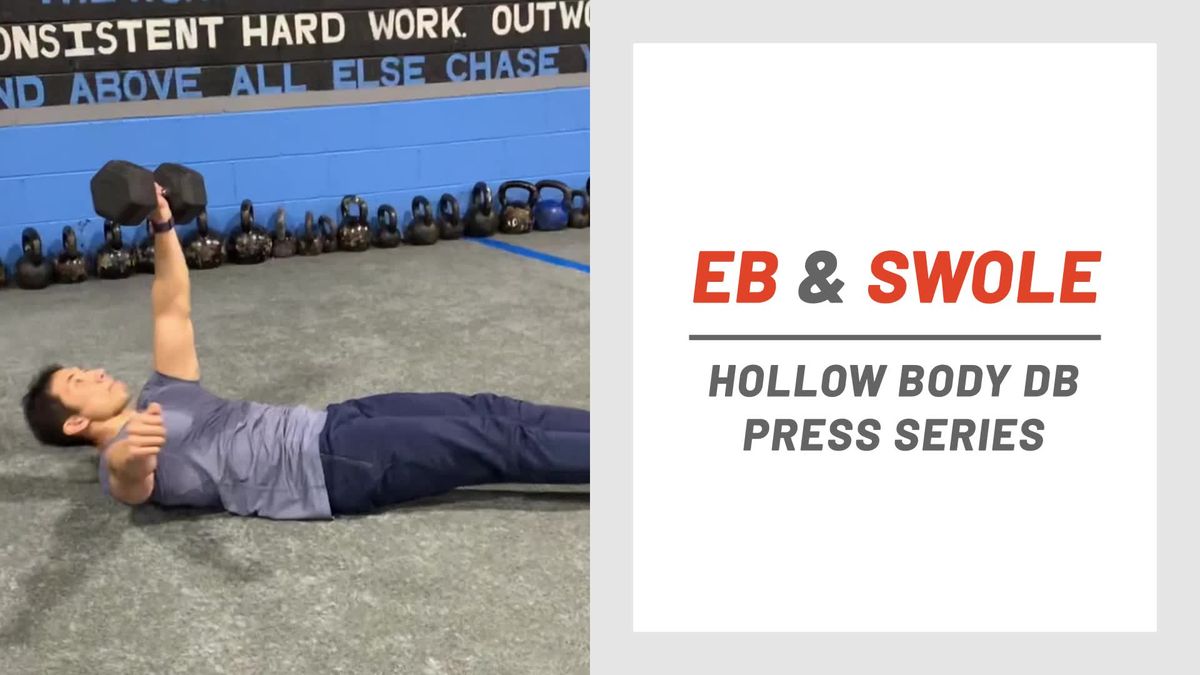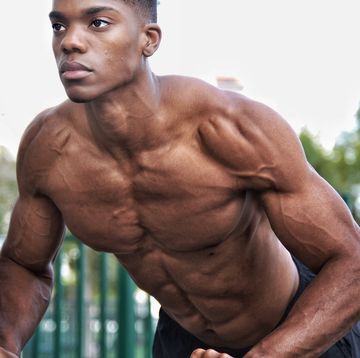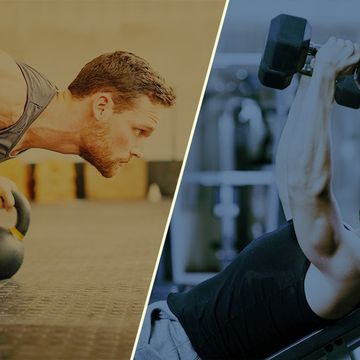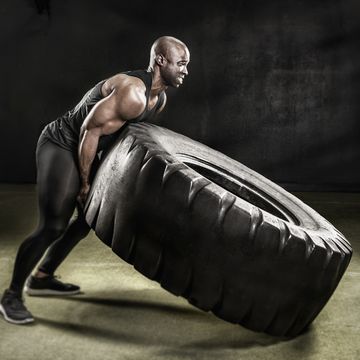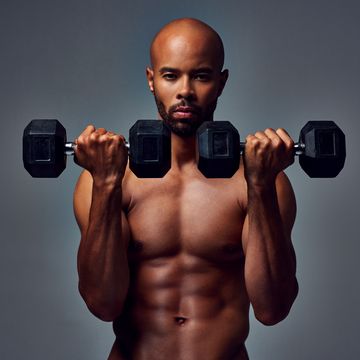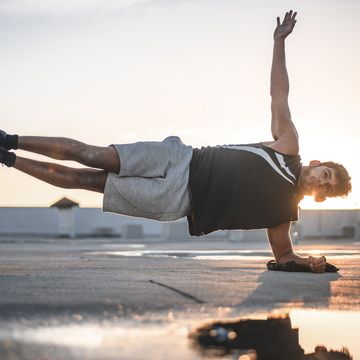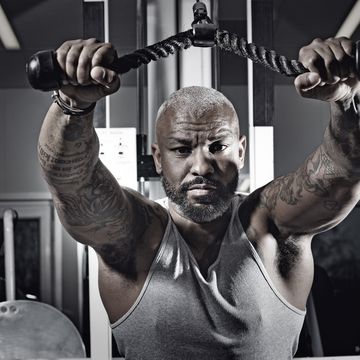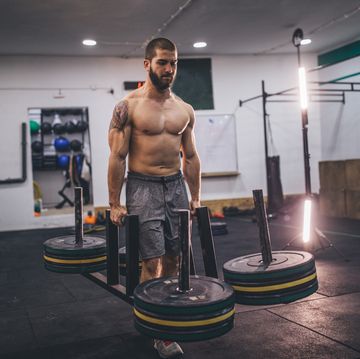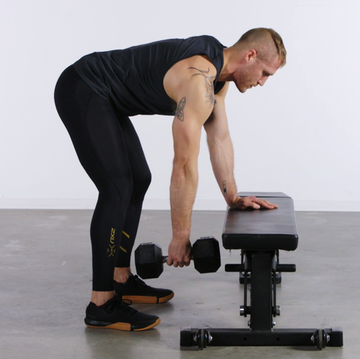If you’re serious about packing on muscle, size, or strength, you know, instinctively, that you have to do more than move. That’s why you’ve likely picked up a set of dumbbells and kettlebells, or grabbed a gym membership: You understand the value of resistance training.
From the rise of spin to the continued growth of high-intensity interval training, there have been plenty of changes in fitness. But this much has remained constant: You have to move against more than air if you want to get your body to grow. And any exercise movement that places you against a resistive force is considered resistance training.
Even if you're relying heavily on bodyweight training, as many have had to do during #quarantinelife, you've been doing a form of resistance training. Bodyweight training still has you loading your muscles with something (your own bodyweight), and within the context of bodyweight training, you can still create challenge for your muscles. And at it's core, resistance training is about challenging your muscles under load (or resistance), pushing them farther by doing so.
Resistance training is the key to building the muscle you want, and to adding overall muscle. It's challenging your muscles and tendons in ways that don't come if you, say, take a four-mile walk or lightly pedal on a stationary bike. You're pushing your muscles to overload, and when you do this correctly, your muscles respond by adding size and strength to face the new challenges of resistance training.
Resistance training is a fundamental piece of your muscle-building journey. Not sure where to start with it? We’ve got you covered in this resistance training primer.
Are weights the only form of resistance training?
No. Essentially, any exercise in which you muscles must a “resistive” force is considered resistance training. When your muscles face a “resistive” force, they must produce greater force than normal in order to create some sort of movement (or, in some cases, to stop movement). That’s resistance training.
Barbells, dumbbells and kettlebells are obvious examples of such resistive forces, but they’re not your only options. Bodyweight resistance training is also common—and can offer considerable challenge. Moves like pushups, squats, and pullups are all examples of bodyweight resistance training, and they’re packed with challenge, too.
There are options beyond bodyweight and barbells, too. Keiser resistance machines, which are driven by pneumatic resistance, are increasingly popular among major sports teams, offering smooth, continuous resistance. Resistance bands are also popular options. Even water can offer resistance, especially if you use tools to magnify its power; Life Time Fitness and Speedo partnered to create a WTRX class that challenges your muscles in the pool.
Other examples of resistance training include sled pushing, row- and ski-ergs (which offer variable resistance) and parachute- or partner-resisted running drills.
What about isometrics?
Isometrics are a somewhat overlooked and forgotten method of resistance training. In most muscle contractions, such as a biceps curl, the target muscle changes length. Your biceps contracts to shorten as you lift the dumbbell, then lengthens as you lower it.
In an isometric, your muscle creates force, but it does not change length — or move at all. Picture yourself pushing against a wall. The wall won’t move, but if you push incredibly hard, you can still create force with your muscles. And the wall does actually present a resistive force, inertia, which can provide challenge. Don’t build your entire strength training program around isometrics, but if you’re dealing with injury, they can offer training benefit; studies have shown that you can gain strength with isometric training (although that strength may not always translate over the full range of motion).
Is resistance training the only way to build muscle?
No. Quick physics lesson: Force = mass times acceleration.
Your goal in training is to challenge your muscles to produce force, because that’s what makes them grow. Facing a resistive force, or a mass that your muscles must accelerate, makes it easier for your muscles to produce force. But your muscles can also produce force with lighter mass (or no mass at all, too).
Sprinters, for example, ask their legs to produce massive amounts of force so that they can accelerate forward at great speeds. And you won't find a sprinter without wildly muscular legs.
What’s the best kind of resistance training for building muscle?
Weights and bodyweight. Dumbbells and kettlebells let you train the body through a variety of ranges of motion, and in a variety of movements with very little setup. They’re also joint-friendly, so they’re an ideal starting point for any resistance-training program.
You can also get a lot done with bodyweight, and managing bodyweight is a valuable tool for overall fitness. All the dumbbell curls in the world won’t help your total body strength or total body fitness if you can’t do a pushup or squat or hold a plank for 30 seconds.
How often should you resistance train?
It’s generally assumed that more resistance training is better, so your instinct may be to hit the gym and lift weights 7 days a week. But that’s not always necessary—or the best way. According to Men’s Health Advisor Brad Schoenfeld, Ph.D., C.S.C.S., training frequency is overrated; you can build muscle training three days a week or six.
How many reps and sets should I be doing?
If you’re aiming to build muscle, you’ll want to do 3 or 4 sets of every exercise, and stay in the 8-to-12-rep range, which research has shown is the best range for packing on muscle. This is also a good rep range for fitness beginners, because it gives you a chance to learn each exercise and get consistent with the motions.
Start with light-to-medium weights at first, so you can learn each movement and start learning to contract your muscles correctly. You can go heavier down the road.
What are the best resistance training exercises for muscle-building?
Aim for multi-joint motions, like bench presses, rows, squats, and deadlifts. These moves hit multiple muscles at once, which is how your body works in real life. You can also generally move more weight on these exercises than you can on more single-joint motions like biceps curls and lateral raises.
And facing more resistance will help your body grow in size and strength. Very often, multi-joint motions will also insure that your core, from abs through glutes, is active in the motion as well.
Facing more resistance and challenging multiple muscle groups has one more virtue too: It’ll rev up your metabolism more than single-joint moves, leading to greater calorie burn and fat loss.
Sprinkle in isolation techniques, like concentration curls and triceps extensions, near the end of your workouts.
At-Home Starter Workout
So what should a resistance training workout look like? It can take many forms, and as you grow more experienced, you'll eventually want to section things off by training certain bodyparts on certain days, or training certain motions (think pulling exercises one day, pushing another) on certain days. But if you're just starting off, try training three days a week. If you have no equipment or limited equipment, this workout, which uses home gear and your bodyweight, is a good start.
Directions: Do this workout three days a week, resting one day in between workouts. Do this workout as a circuit, resting 30 seconds between moves. Do 3 rounds.
Two-Way Plank Iso Row Hold
Start building back strength and core strength with this row iso-hold from fitness director Ebenezer Samuel, C.S.C.S.. Use what you have access to. A large gallon like this works fine, or a backpack of books, or a dumbbell if you have one.
Pushup
The basic pushup is a good pressing exercise you can integrate into your training. Do 12 TO 15 reps.
Bodyweight Split Squat
Do 12 reps per side.
Have Weights? Then Do This Workout
If you have access to resistance, challenge yourself with this workout.
Directions: Do this workout three times a week, resting one day between each session. Use weights that challenge you, but make sure to maintain clean form at all times. Do all sets of each exercise, then move onto the next move.
Dumbbell Row
Start by firing up your back muscles. Do 4 sets of 10 to 12 reps per side.
Hollow Body Single-Arm Floor Press Series
Do 3 sets of this per side. It will attack your core, and blast chest and tris too.
Goblet Squat
Do 4 sets of 10 to 12 reps here, blasting your legs.
Romanian Deadlift
Finish by attacking hamstrings and glutes with four sets of Romanian deadlifts. Don't have a barbell? Use dumbbells or kettlebells. Do 8 to 10 reps per set.
Ebenezer Samuel, C.S.C.S., is the fitness director of Men's Health and a certified trainer with more than 10 years of training experience. He's logged training time with NFL athletes and track athletes and his current training regimen includes weight training, HIIT conditioning, and yoga. Before joining Men's Health in 2017, he served as a sports columnist and tech columnist for the New York Daily News.

